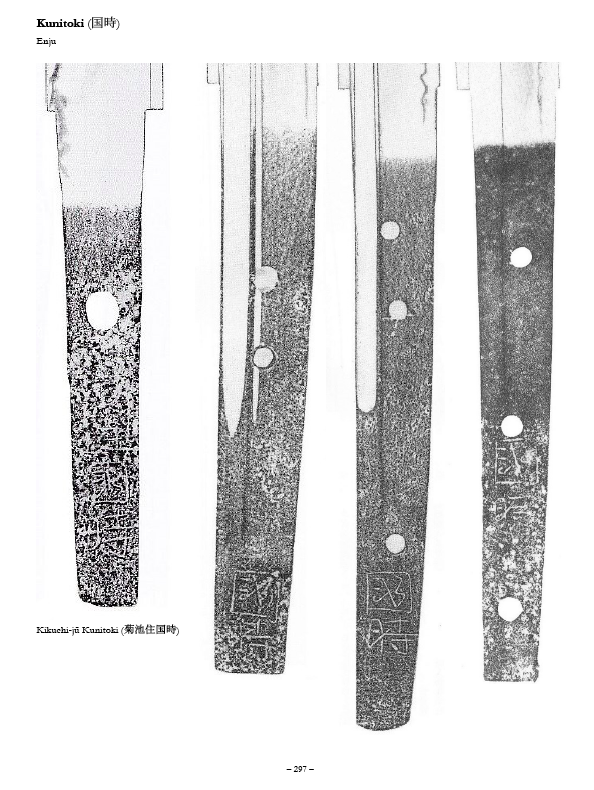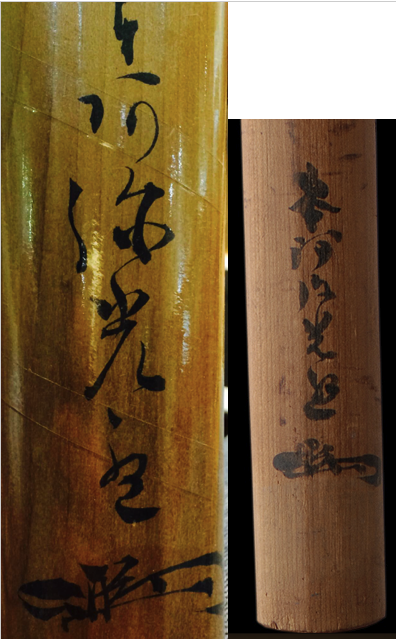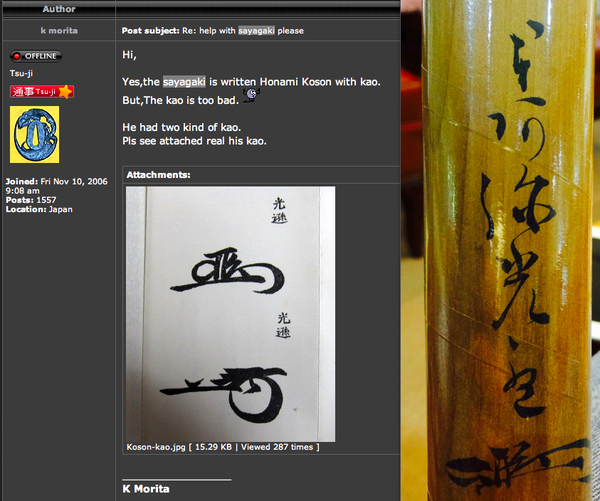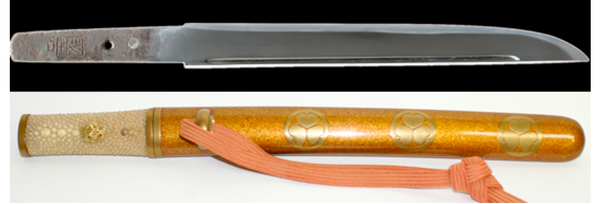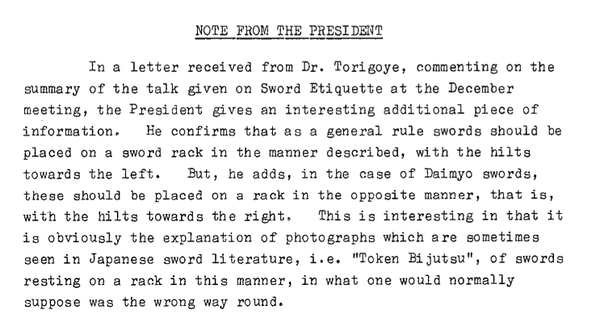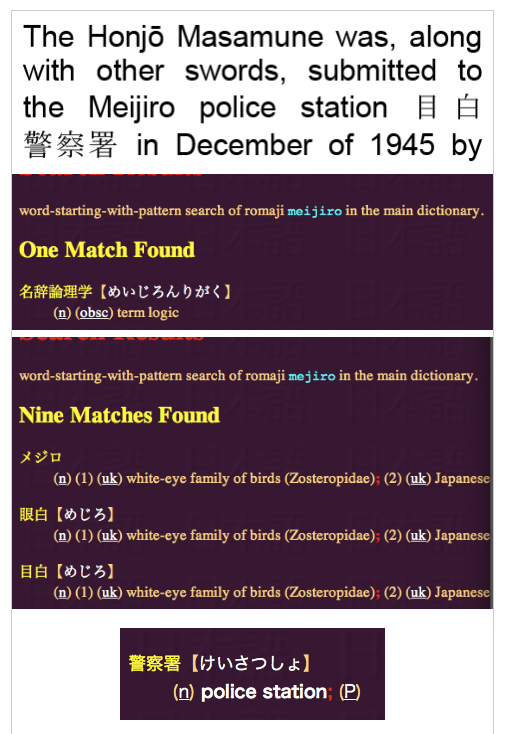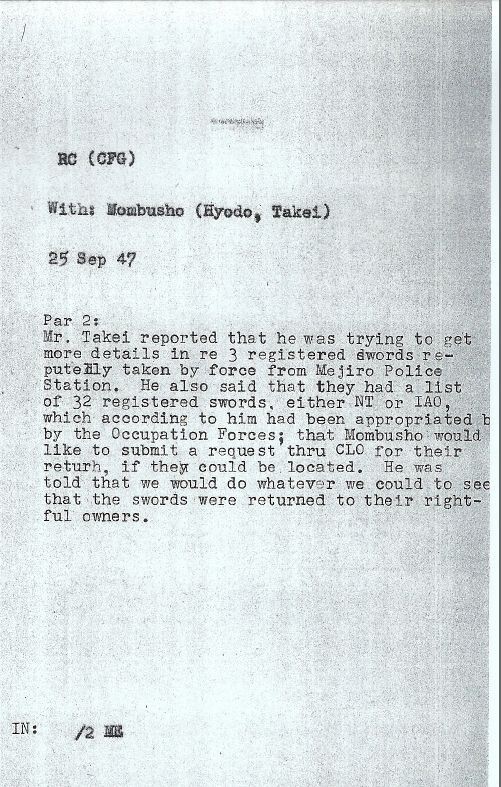-
Posts
1,029 -
Joined
-
Last visited
Content Type
Profiles
Forums
Events
Store
Downloads
Gallery
Everything posted by Eric H
-
-

Christmas eBook Super Sale 50% off
Eric H replied to Markus's topic in Auctions and Online Sales or Sellers
Don‘t miss this very generous offre...just ordered 4 e-books Eric -
Koson‘s later kao is well documented, whether as sayagaki, kinpun- or shu-mei and also from his origami. The early kao seems to be a rare finding. The two examples which Morita san has posted as reply in another topic are from Nakahara‘s book. I add a last example for comparison, however this is not certified. Eric
-
-
-
His roots go back to the Kiyomaro school, a peculiarity is his nakago in kijimomo shape. UK Sword Register No. 51 Eric UK SR, No. 51.pdf
-
-
These JTK papers belong to a Wakizashi with mei -according to the papers- NAGA.....?, hacho 54.5..... cm, jidai Eikyo. However I can‘t make out a mei. Anyway the description in the auction catalogue lacks accuracy. Eric
-
The interviewer was apparently Mr Robert Cole, publisher sho-shin. There is another Interview with Dr. Tokuno, both articles can be viewed on his web site. Eric
-
Kinnashiji Aikuchi koshirae for JuTo tanto Awataguchi Kuniyoshi 22.2 cm Btw this very same koshirae pictured by Pete Klein was used once for a Toshiro Yoshimitsu tanto....what a coincidence. Eric
-
Henk-Jan, Please read Torigoye‘s comment concerning the placement of „Daimyo swords“ on a rack. Because I‘m unaware of a special category of „Daimyo sword“ whether in sword literature nor sword glossary, so I suppose this label is suitable to swords out of Daimyo property. Contrarily to the comment of a member: ..."than probably half the swords out there are displayed the wrong way around“...I believe that counting the MMB members of total 3057 today, perhaps a handful of them are proud possessors of Daimyo swords. Well such categorized swords can be displayed by well-informed collectors in the recommended manner, giving this way a hint to another well-informed collector what kind of swords are displayed. Recently a picture of the Ichimonji Imaaranami Tachi was posted on the board. This is kind of „Daimyo sword“ in my understanding. Eric
-
The discussion started based on Torigoye sensei‘s statement, that Daimyo swords - swords of former Daimyo property - should be placed properly on the sword rack the tsuka towards the right, which is believed to be wrong, but often practised by lesser informed people. There is a example in the thread „Hanging Japanese scroll above nihonto display“. On the old paintings the swords are represented with cutting edges downwards and upwards, but the tsuka towards the right. We don‘t know if these historical illustrations represent the reality or if they are the outcome of free artistic design. Anyway I for one have learned the lesson given by Torigoye sensei. As said in the article it is the explanation of photographs which are sometimes seen in Japanese sword literature of swords resting on a rack in the described manner, in what one would normally suppose was the wrong way round. Eric
-
A historic testimony of the correct placement of Daimyo‘s swords, the rack placed at the right side of the Daimyo: Wakizashi on the top, Katana on the bottom, cutting edges downwards, thus showing the omote side of the swords. This makes sense. Of course owners of swords of Daimyo possession have free choice the one or the other way Thanks for sharing Eric
-
Bonhams New York - 27/10/2014 - Lot 1129 not sold Eric
-

Honjo Masamune found!! (well almost... maybe)
Eric H replied to Adrian S's topic in General Nihonto Related Discussion
-

Honjo Masamune found!! (well almost... maybe)
Eric H replied to Adrian S's topic in General Nihonto Related Discussion
-

Honjo Masamune found!! (well almost... maybe)
Eric H replied to Adrian S's topic in General Nihonto Related Discussion
According to the new article on the Honjo Masamune it is stated that Albert Yamanaka has transcribed the Gunso‘s name as Coldy Bimore. Strange that this information did not pop up in this thread. Yamanaka‘s competency is beyond question. Eric -
A brilliant article on the outstanding importance of Masamune in the history of the Japanese sword, in the center point the Honjo Masamune with its own history, now missing since end 1945. What happened after that has been thoroughly researched as much as possible...but it remains „The lost Honjo Masamune. Thanks for sharing Eric
-

Honjo Masamune found!! (well almost... maybe)
Eric H replied to Adrian S's topic in General Nihonto Related Discussion
-

Honjo Masamune found!! (well almost... maybe)
Eric H replied to Adrian S's topic in General Nihonto Related Discussion
Once more misunderstood. Corey or Coley is shown as example that both are written the same way in katakana, thats all, but perhaps spoken differently....R or L. The name in katakana is a „phonetic“ testimony. Until now it is believed that the first name is the person‘s name, but what when it is the family name followed by the personal name as pointed out by T.C. Helm. The english Report from Mr. Arita states 2 names, this should not be overlooked, and I would give preference to the theory family name first followed by personal name. Westerners are apparently not in the position to solve this brain teaser, Japanese people have better prerequisites. Eric -

Honjo Masamune found!! (well almost... maybe)
Eric H replied to Adrian S's topic in General Nihonto Related Discussion
Guido, I see no compelling arguments to change my opinion. Erich


